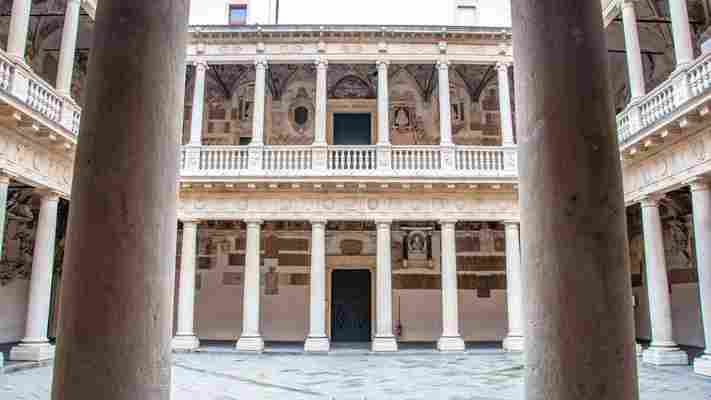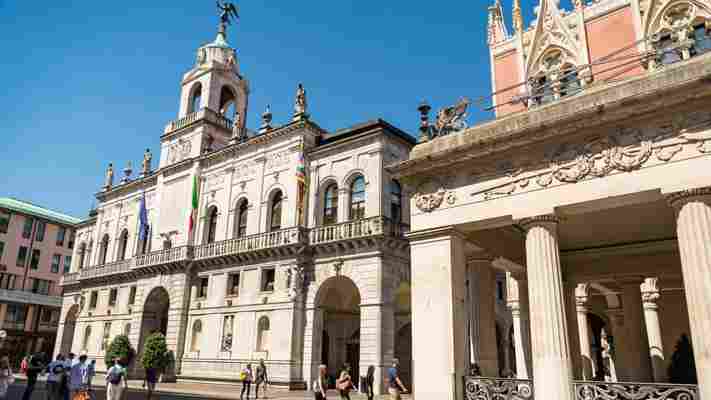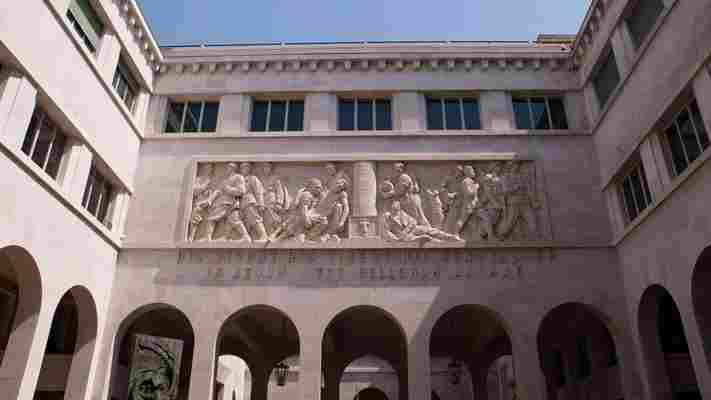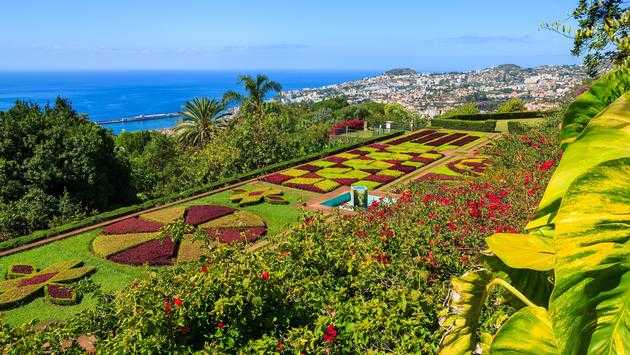From the 2nd Century AD to the end of the Middle Ages, it was an accepted tenet that monkeys had the inner workings quite like those of man. This was the anatomical point of departure established by the 2nd-Century Greek physician Claudius Galenus – commonly referred to as Galen – who at the time was the authority on all things medical in Western Europe and Byzantium. Yet due to religious, legal and cultural taboos, he had never systematically dissected human bodies. Instead, his writings and dissections of monkeys, specifically Barbary and rhesus macaques, guided the development and practice of medicine for around 1,400 years.

And then something ground-breaking happened.
A scientific revolution burst through the self-imposed limits of ancient knowledge. After human dissections being frowned upon for hundreds of years, in the 16th Century a shift to scientific research and observation allowed the real picture of human anatomy to emerge for the first time, paving the way for the practice of medicine we see today.
At the forefront of it all was one Italian city – Padua – and its university.

During the 16th Century, Padua, Italy, was on the forefront of a scientific revolution (Credit: Enrico Della Pietra/Alamy)
You may also be interested in: • The island that forever changed science • How France created the metric system • The revolution that mapped the world
Padua has a rich artistic, religious and literary heritage. It’s best known as the setting of Shakespeare’s The Taming of the Shrew and where Italian artist Giotto – recognised as the Father of the Renaissance – frescoed the Scrovegni Chapel with biblical scenes loaded with human emotions. What is most remarkable about this northern Italian city, though, is that it’s the cradle of modern medicine.
Medicine had been studied in Padua – once a free commune – for many centuries. This tradition was upheld when the University of Padua was founded in 1222. A renowned centre of the sciences, the University of Padua enjoyed unparalleled autonomy and religious tolerance even after it came under the rule of the Carrara dynasty during the 14th Century. When Padua was conquered by the Republic of Venice in 1405, the Venetians kept the university as the main educational hub of the Republic and managed it under the motto of Libertas docendi et investigandi (Freedom of teaching and researching).
“The Republic understood that the university was a fundamental opportunity to foster a culture that celebrated Venice’s government,” explained Fabio Zampieri, associate professor of history of medicine in the Department of Cardiac, Thoracic and Vascular Sciences at University of Padua Medical School. “The best professors were called from all around Europe, captivated by the guarantee of freedom of research. The fame of the best professors attracted the best local and international students, too.”
As a result, the University of Padua became the centre of what Zampieri describes as ‘the Scientific Renaissance’, part of the larger Renaissance period.

Founded in 1222, the University of Padua was the main educational hub of the Republic of Venice (Credit: Brenda Kean/Alamy)
This was a time of major change. While the Middle Ages relied on theology and knowledge that was acquired through the reading of theoretical books, the Renaissance period brought with it a shift to a scientific method that relied on practical testing and experimentation.
Zampieri continued, “During the Renaissance, Galileo taught mathematics here and spread his new quantitative method, which deeply influenced also medicine. William Harvey – who first described fully the human blood circulatory system – was a student of medicine in Padua. Santorio Santorio – a professor at the university – invented the thermometer. Giovanni Battista Morgagni – a professor of anatomy here – founded modern anatomical pathology in the 18th Century. The first human heart transplant in Italy was performed in Padua in 1985.”
A brisk 15-minute walk took me from the Padua train station to Palazzo Bo in the city’s heart. The historical seat of the University of Padua, Palazzo Bo is the place where medicine finally received the systematic approach it needed to grow into a modern science. On my tour, I could feel the echo of galvanising lectures and ground-breaking scientific and medical discoveries that took place here.
Stepping into the monumental courtyard decorated with the colourful heraldic crests of former students, I stopped for a moment. This is where in the 16th Century, Andreas Vesalius performed systematic dissections of human bodies in a temporary anatomic theatre in front of crowds of 500 people or more.
Many famous scientists passed through the University of Padua, including Galileo Galilei (Credit: Rossi Thomson/Reproduced by concession of the University of Padua)
Born in Brussels, Vesalius arrived in Padua in September 1537 where he completed a doctorate in medicine in December that same year. He immediately became chair of the university’s Anatomy and Surgery Department – a position he held until the early 1540s.
During his time in Italy, Vesalius wrote his revolutionary work De Humani Corporis Fabrica Libri Septem (On the Fabric of the Human Body in Seven Books), which was published in 1543. The seven books explained the workings of our bodies in unprecedented detail, with help from meticulous illustrations executed by artist Titian’s studio in Venice under the close guidance of Vesalius himself.
Greek physicians Herophilus and Erasistratus performed systematic dissections of human bodies in the first half of the 3rd Century BC in the Greek School of Medicine in Alexandria, Egypt. However, the writings about their findings were lost in the great fire that devastated the library of Alexandria – the ultimate scientific and cultural hub of the Ancient World.
Human dissection fell into disfavour in both Greece and Rome, becoming such a cultural taboo by the 2nd Century AD that Galen had no other choice but to dissect animals in his quest to understand the human body. This led to several errors in his findings, and because there was no acceptable way to refute them, Galen’s assumptions persisted as medical knowledge for more than 1,400 years.
Andreas Vesalius performed dissections of human bodies in the courtyard of the Palazzo Bo (Credit: Rossi Thomson/Reproduced by concession of the University of Padua)
It was only towards the end of the Middle Ages that a wind of change could be felt. By the 1300s, human dissections were introduced as a valuable teaching exercise for medical students. However, dissections were not a common occurrence, and anatomists merely directed the proceedings by reading verbatim from Galen’s texts, leaving the actual dissection to a surgeon. It wasn’t until Vesalius came along that people truly began to question the existing knowledge of the human body.
“Vesalius revolutionised the teaching of anatomy by performing the dissection himself. Vesalius commented on the cadaver in front of him, thus putting for the first time the human body as the book of nature at the centre of anatomical research,” Zampieri explained. “He also revolutionised the content of anatomy, by demonstrating that Galen never dissected human bodies and that the animals which he dissected presented many anatomical differences with man.”
On the Fabric of the Human Body in Seven Books caused quite the stir in the 16th-Century world of medicine, provoking a strong rebuttal from Western Europe’s most illustrious medical professors and practitioners who were devoted Galenists. Vesalius felt ostracised, and abandoned his academic career. But his departure didn’t stop the advance of medical science at the University of Padua. Anatomists and physicians like Gabriele Fallopio (who first described the Fallopian tubes) and Bartolomeo Eustachi (who was the first to accurately study the anatomy of the teeth) took the proverbial baton and then passed it on. Nowadays, portraits of these luminaries of modern medicine adorn the Hall of Medicine at Palazzo Bo.
Fabio Zampieri: “Vesalius revolutionised the teaching of anatomy” (Credit: Universal History Archive/Getty Images)
Just over 50 years after Vesalius performed dissections in a temporary anatomical theatre in the university courtyard, the world’s first permanent structure designed for public anatomical dissections was erected inside the Palazzo Bo between 1594 and 1595 next door to the Hall of Medicine.
The guide led our group to the ‘kitchen’ – a room with dark-coloured walls where the cadavers would be prepped for the dissections. We accessed the anatomical theatre from the door through which bodies were once carried and crowded right below the spot where the dissection table used to be placed.
This was a time of major change
In the dim light, I could glimpse the six narrow tiers on which up to 250 medical students and other spectators would congregate. There were no seats, no space to take notes and, initially, no windows. Shaped like a funnel and beautifully carved from wood, the concentric, gradually expanding tiers had amply-high balustrades to ensure that the spectators, if they fainted, could not fall and disrupt the dissection. Students, professors, aristocrats, visiting dignitaries and even noble ladies would attend the candlelit dissections. A violin orchestra would play on the top-most tier to make the atmosphere feel less nauseating.
Each body would be dissected over several days in winter, traditionally during the Carnival season – a licentious period when social mores would be more relaxed and dissections could be performed despite the still-existing taboos around them.
A range of emotions took over the group as we listened to the guide describe what took place where we stood. The more squeamish ones among us squinted their eyes and looked a bit put off. One surgeon who had travelled all the way from Canada to see this sanctuary of medicine for himself couldn’t get enough of the tales about the world’s first permanent anatomical theatre.
The world’s first permanent anatomical theatre was built in the Palazzo Bo in the late 16th Century (Credit: DEA / A. DAGLI ORTI/Getty Images)
After touring Palazzo Bo, I ventured back into the city where a number of other sites highlight Padua’s influence on modern medicine. I made my way to the Museum of History of Medicine (MUSME) , which relies on hundreds of artefacts and dozens of interactive displays to tell the complex story of how we came to understand and treat the human body. From there, I strolled through Padua’s porticoes, past the Basilica of St Anthony to the university’s botanical garden .
Founded in 1545 and now a Unesco World Heritage site , the botanical garden was vital to medical students’ studies of botany – particularly the therapeutic and healing power of plants. Many new botanical species were introduced to Italy via this beautiful place, including sunflowers, potatoes and sesame, as well as jasmine and lilac.
According to Zampieri, Europeans even have this botanical garden to thank for coffee. “It’s a fact that the first mention in Europe of coffee was in [the 16th-Century work] De Medicina Aegyptiorum by Prospero Alpini, who was the garden’s director.”
The University of Padua’s botanical garden was founded in 1545 to help scientists study the healing power of plants (Credit: Hilke Maunder/Alamy)
As I left the botanical garden, I thought of what Herbert Butterfield, history professor and vice-chancellor of the University of Cambridge, wrote in his book The Origins of Modern Science 1300-1800, published in 1959: “In so far as any single place could claim the honour of being the seat of the Scientific Revolution, the distinction must belong to Padua.”
Join more than three million BBC Travel fans by liking us on Facebook , or follow us on Twitter and Instagram .
If you liked this story, sign up for the weekly bbc.com features newsletter called "If You Only Read 6 Things This Week". A handpicked selection of stories from BBC Future, Culture, Capital and Travel, delivered to your inbox every Friday.






Leave a Comment